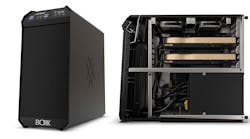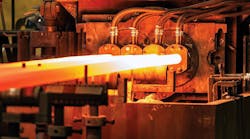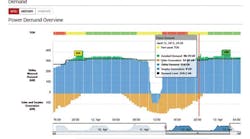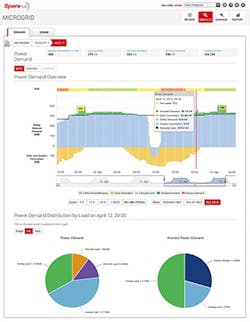Melting is what all foundries and diecasters have in common: they all do it in some way, have done so for centuries, and they all assume the risks and costs. For many of them, in particular those operating electric melting systems, it’s only in recent years that the extraordinary costs for electric power have become something they can optimize, if not avoid.
The whole subject of affordable power has theorists and investors buzzing with proposals, typified by the “home battery” concept expected to be introduced in the coming months, offering individual homes or businesses the ability to store solar energy for later use. If there is a trend about to break in affordable power, some metalcasters may be ahead of it.
Many metalcasters know Powerit Solutions as the supplier of demand-management software (a platform known as Spara DM) that allows industrial power consumer to optimize their use of power from the grid. So, energy-intensive operations (like electric melting) can be automatically synched to utilities’ pricing and availability initiatives, even on short notice.
Recently, Powerit explained how its demand management software functions as “a microgrid controller,” which matters because on-site solar-energy (PV) systems can increase a site’s demand from the grid. It offered a series of analyses for different types of installations, including one for a foundry operation.
Powerit compared the energy demand savings at two 2.5-MW industrial facilities under three scenarios: adding solar generation to the plant; using Spara DM for demand control; and adding solar along with Spara technology. “At both facilities, the combination of solar power and demand management produced the optimal savings and the lowest peak demand from the grid,” according to the developer. To test the scenarios, it compared projected output from a 1.5-MW solar PV system and typical demand management savings onto actual energy use and billing data for a foundry operation.
The analysis showed the foundry paid $742,594 in demand charges in 2013. With a PV system in place, it could have reduced its electric power costs by 12.1%, or $8,501. With a Spara DM system alone, it could have cut the costs by 5.67%, or $42,106. With both systems, it could have saved 7.68%, or $57,014.
To put these analyses into real terms for their own customers, Spara DM subscribers can access a new dashboard app that shows the real-time impact of a PV system on electric-power demand, and how Spara DM manages it.
The Spara Hub dashboard depicts how Spara DM controls all the energy resources of a specific location, including consuming loads, and uses the inherent energy flexibility and process buffers to create “a virtual battery” and show energy storage, renewable energy sources, and back-up generators. The system can also operate in isolation, e.g., during a temporary failure of the utility grid. The dashboard shows power supplies, demand, and demand management results for a defined period at a single location.
More generally, the Spara Hub dashboard should be understood as a way to customize their demand-management activity for closer analysis and planning. Spara DM works to allow foundries to control demand control, take advantage of dynamic pricing, and manage demand response. Taking advantage of any one or all of these can reduce electric power costs. With the dashboard tool, foundries can evaluate how their operations are interacting with the grid, and what options are available to users to optimize that activity.
Is it likely that many metalcasters will install PV technology? The answer depends on many individual factors, but the opportunity to set up “microgrids” seems real, given the many co-generation and energy-conservation technologies available or emerging for industrial users. More broadly, metalcasters should take the opportunity to see the ways that leverage is shifting in the business of power supply and demand, with more information available to help define their risks and liabilities, more resources to manage their operations and usage, and more tools available to define their strategies.










